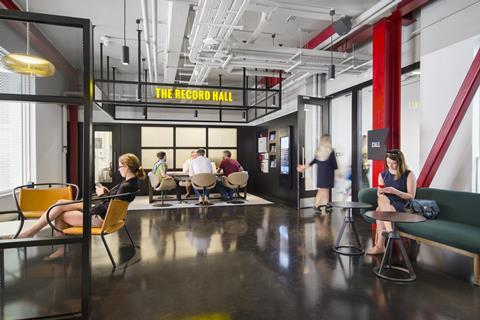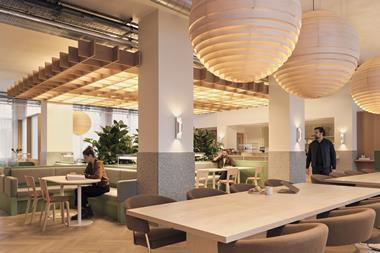Change is afoot. The property industry has long considered investment in sustainability to be important, but often at odds with the profit-driven pressures many real estate companies face.

However, proactive approaches to increasing a building’s sustainability credentials are now becoming the norm for future-proofing office spaces, creating better long-term returns and satisfying occupier demands and needs.
By taking steps to develop green buildings, the industry can reduce its negative environmental impact. However, sustainability no longer simply equates to the traditional energy-water-waste triangle. It now covers biodiversity, health and wellbeing, customer and community engagement and behaviour change. This creates a multitude of considerations for achieving green status and ensuring sustainability is at the front of the industry’s mind.
The Record Hall in Farringdon, London, which achieved BREEAM Excellent Design Stage rating, is an example of how we’ve embraced sustainability and placed it at the heart of Workspace’s redevelopment process, to the benefit of our environmentally conscious customers.
When the former record depository was redeveloped to create 60,000 sq ft of office and studio space, we appointed an environmental consultant at the early stages of design to allow ample opportunity to create change across transport, land use and ecology, and health and wellbeing. Retaining the brickwork facade significantly reduced the project’s lifecycle emissions. We also installed more than 3,000 sq ft of green roof space across two levels, 50 indoor cycle spaces and solar panels, and responsibly sourced the materials.
Listed buildings are a challenge, but developers can make them greener by providing low-carbon heating, extensive metering, sustainable travel plans, natural ventilation and plenty of space for recycling facilities.

Increasing natural light by installing larger windows and open spaces has a positive impact on occupier wellbeing, while biodiversity can be incorporated with living walls or by adding greenery to roof terraces.
These are just a few initiatives that begin to improve a building’s sustainability offering. However, to go one step further, we must also encourage occupiers to adopt a sustainable mindset in their organisations and encourage their own employees to do the same.
At Workspace, we’ve involved our customers in green and recycling groups and set up free workshops with the Carbon Trust to discuss energy efficiency and funding opportunities with SMEs in our buildings, promoting collaboration and behaviour change.
This ensures that buildings are performing sustainably from the inside out. It also attracts more discerning occupiers – who ask us where their energy comes from and where their recycling goes.
As expectations from occupiers continue to increase, so do the possibilities for developers that are ready to harness this interest. Success will come from keeping sustainable design at the heart of project plans from the outset. By doing so, our industry has the opportunity to develop properties that are set to last.
Karen Jamison is energy and sustainability manager at Workspace Group






























No comments yet